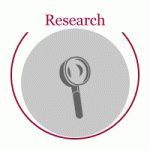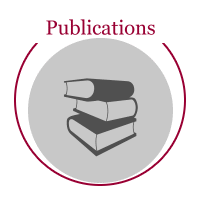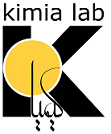Basic research is a major driving force in our society. Scientific observation and problem solving, as striking aspects of human consciousness, are crucial for progress and overcoming challenges. Looking at problems and attempting to find a solution is a very thrilling part of working at a university.
Effective November 1, 2021, Professor Tizhoosh has moved to Mayo Clinic, Rochester, MN, USA. Professor Tizhoosh accepts MSc/PhD/PDF applications at the University of Minnesota.
Contact: tizhoosh.hamid@mayo.edu
Dr. Tizhoosh’s Website at Mayo Clinic
Short Resume …
“Academic” Education
PhD Electrical/Computer Engineering
September 1999
Otto-von-Guericke University, Magdeburg, Germany
Thesis: Image Enhancement with Respect to Subjective Expert Knowledge Using Fuzzy Aggregation Techniques
MASc Electrical Engineering
August 1995
University of Technology, Aachen, Germany
Thesis: A Fuzzy-Logic Approach to Segmentation and Extraction of Edges and Lines

Academic/Industrial Experience
- Mayo Clinic
Department of Artificial Intelligence and Informatics
November 2021-present
(Medical imaging, artificial intelligence) - University of Waterloo
Systems Design Engineering
September 2001 – October 2021
(Computer vision, machine intelligence, medical imaging) - Segasist Technologies
CTO: September 2008 – August 2010
CEO: September 2010 – November 2013
(Learning to segment medical images) - Medipattern Corporation
Consultant – Senior Scientist
May 2007 – October 2008
(Medial image analysis) - University of Toronto
Canada, February 2001-September 2001
(Reinforcement Learning) - IPS Image Processing Systems Inc. [now Photon Dynamics]
Markham, Canada, May 2000-February 2001
(Industrial Image Processing, quality control) - University of Magdeburg
Germany, 1996-1999
(Medical imaging, fuzzy systems, evolutionary algorithms and neural networks) - MIT Company
Aachen, Germany, 1993- 1996
(Industrial image processing using neural networks fuzzy logic) - XPERT Company
Aachen, Germany, mid 1993-end of 1993
(Programming of signal processing devices) - Prometec Company
Aachen, Germany, 1990-mid 1993
(Hardware design and development for measurement devices)
Research
 Dr. Tizhoosh’s main research fields are computer vision and machine intelligence with pattern recognition as a superset for vision and a subset of machine intelligence. Other fields, such as health engineering, terahertz imaging, visual perception etc., are related either to computer vision activities or machine intelligence research.
Dr. Tizhoosh’s main research fields are computer vision and machine intelligence with pattern recognition as a superset for vision and a subset of machine intelligence. Other fields, such as health engineering, terahertz imaging, visual perception etc., are related either to computer vision activities or machine intelligence research.
As well, he investigate, via free inquiry and observations, the nature of mind and consciousness, the relationship between time and evolution, the roots and different forms of violence, and the significance of education for the freedom of mankind.
Conceptual & Algorithmic Research
Applied Research
Publications

Teaching …

- SYDE 223
Data Structures & Algorithms
Winter Terms
Course Web Page - SYDE 522
Machine Intelligence
Winter Terms
Course Web Page - SYDE 677
Medical Imaging
Fall Terms
Course Web Page
Students
 Kimia Lab’s students work in different fields of computer vision, pattern recognition and machine intelligence. A good relationship between supervisor and student is paramount for scientific investigations. Students should be guided to learn the fundamentals of scientific research but they should have the freedom to make their own decisions and their own mistakes; Free inquiry accompanied with a friendly relationship to the supervisor is the only way to educate future scientists.
Kimia Lab’s students work in different fields of computer vision, pattern recognition and machine intelligence. A good relationship between supervisor and student is paramount for scientific investigations. Students should be guided to learn the fundamentals of scientific research but they should have the freedom to make their own decisions and their own mistakes; Free inquiry accompanied with a friendly relationship to the supervisor is the only way to educate future scientists.
The Graduate Studies Office at the University of Waterloo also provides a wealth of useful information including, but not limited to, cost of study and financial aid for prospective graduate students, as well as specific information about the graduate program in the Department of Systems Design Engineering.
:: See also the department’s page
